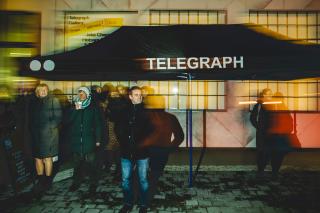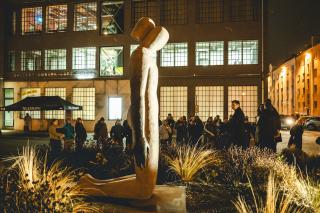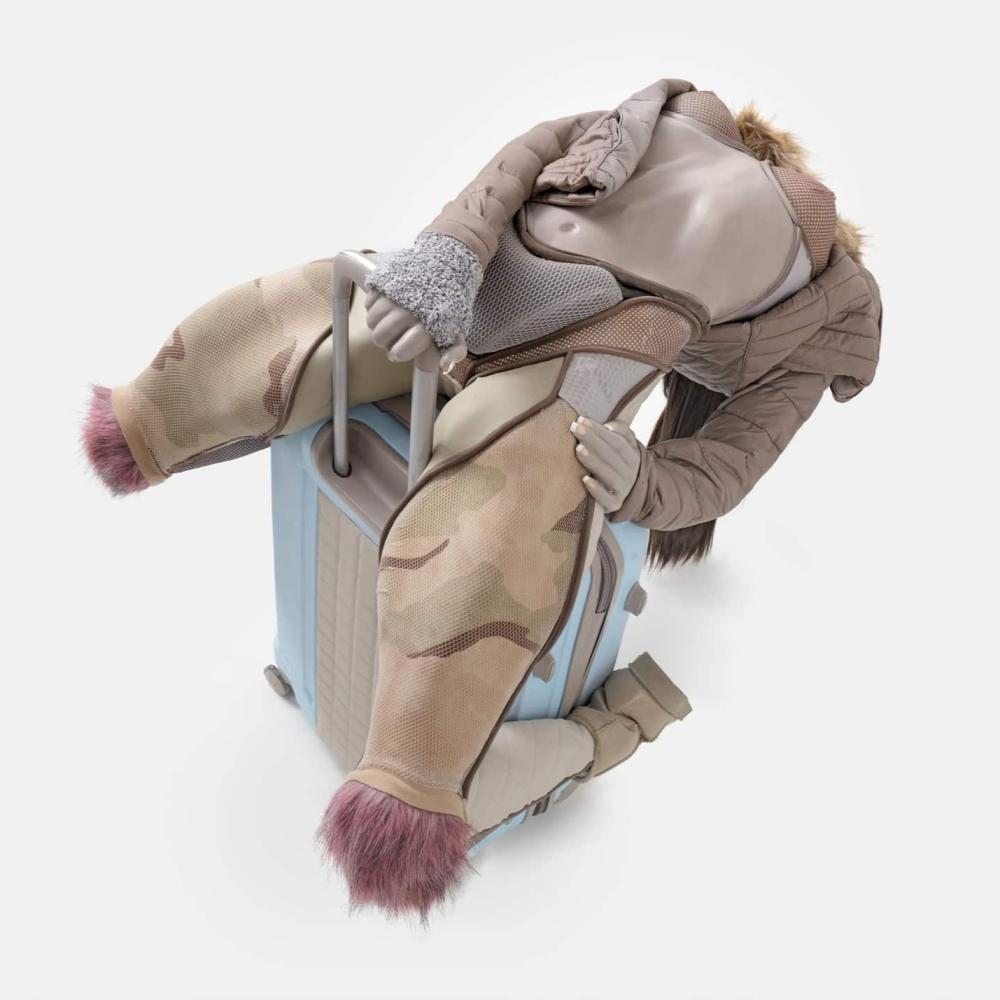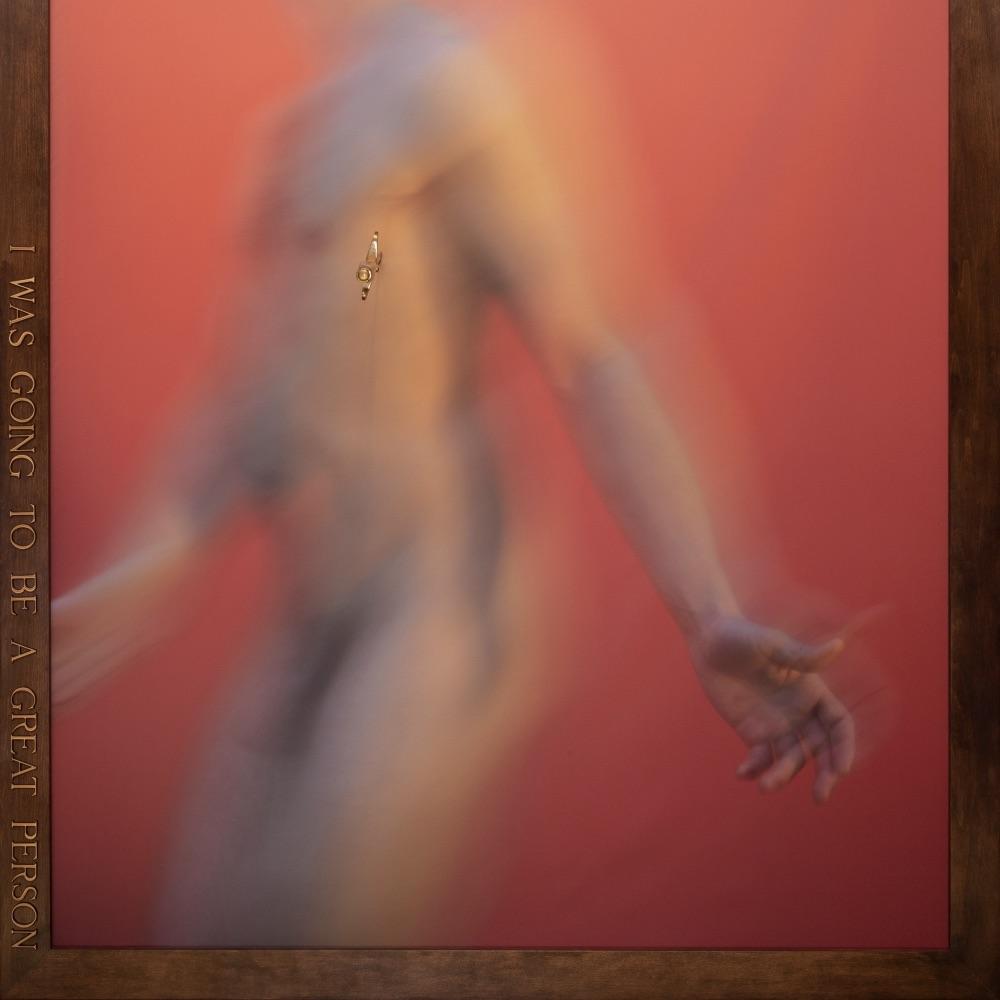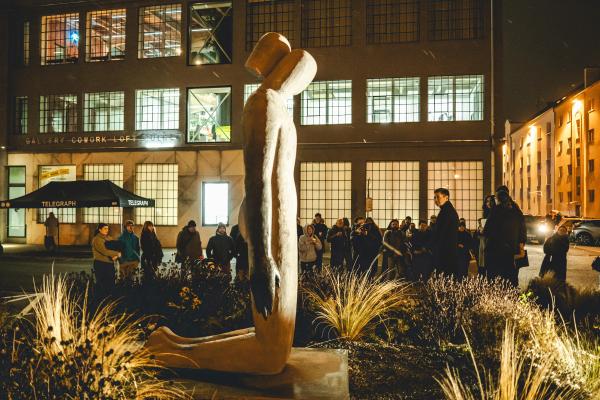
Art not only permeates all floors of the Telegraph from the gallery, it also extends beyond the building and seeks to conquer the public space. This was evidenced by a sculpture of a beast by Michal Gabriel, a leading Czech sculptor whose works reflect the beauty of fauna. Winner of the 1994 Jindřich Chalupecký Prize and co-founder of the Tvrdohlaví art group, he contributed to the overall atmosphere of the Telegraph with his sculpture Mimicry, which, thanks to ingeniously chosen materials, disappears in the refraction of light and reappears in its absence. But the world is constantly changing, and so are we. We said goodbye to the sculpture of the beast and for the Telegraph's fifth birthday we gave ourselves a gift of a new sculpture by Sabina Knetlová.
Sabina Knetlová, Together (what do our eyes look like?)
Sabina Knetlová (*1996) studied at the Faculty of Arts of the University of Ostrava and despite being part of the young generation of artists, she is already well known not only in the Czech Republic. Sabina Knetlová and gallery owner Alexandra Karpuchina, from the Karpuchina Gallery, went to the fair with the hope that they could sell at least one sculpture and return home with success. But the meditative concrete sculptures caught the eye of more than one collector. Knetl's sculptures were sold to New York, Saudi Arabia and Bulgaria, and not a single one remained in the fair booth.
But what drew the big buyers to the sculptures? Many describe Knetlova's work as meditative to the point of dreamlike, something that almost everyone can appreciate in these overcrowded times. The purity and tenderness of the shapes evoke a kind of strange calm in the viewer, and although the sculptures are mostly made entirely of concrete, they do not lack lightness. Knetlová singles out this traditional and ubiquitous material, especially for its accessibility and its gentle nature. In terms of workmanship, the artist describes the creative process as the birth of an original. Just as a painting begins with a sketch, Knetlová's sculptures first receive their plaster prototype and form, which is then filled with concrete. The guarantee of uniqueness is the final "liberation" of the sculpture, which logically damages the form, so the object cannot be replicated.
Sabina Knetlová is devoted to the archetypal expression of ideas that acquire new dimensions in minimalist processing. However, the figure is not the only thing that gets materialized. The author's repertoire also includes natural motifs - for example, a sculpture of a tree whose branches are created with rubber hoses and whose roots are embedded in concrete. However, in the case of the Together sculpture, it is evident that Sabina Knetlová is also thinking about the life of her works in the future. It doesn't end with liberation from the form.
She says the following about the work that already stands in front of the Telegraph building: "I also tried to work with the fact that the sculpture would be outside, accessible to people, so I chose such a compact composition. Except for the legs, nothing really sticks out anywhere, the figure is really just a kind of letter L. The fact that the sculpture will be outside like this has influenced its form quite a lot. I started from the position of 'kneeling on the pea' and tried to find a position of calm, a stopping of time in that position..." And why together? The current discourse presents us with the fact of alienation that permeates the whole of society. Perhaps we need a return to a more collective coexistence. And maybe we are also looking for some other, inner self. A person in the depths of our souls who will accompany us in situations of helplessness.















